The Brief Moment When George Washington's Mount Vernon Graced Prospect Park
If you were wandering along the lake in Prospect Park in 1932 and enjoying the scenic vista unfolding around you, your eyes may have alighted on an incongruous sight, the iconic silhouette of George Washington’s Virginia home.

Photo via Prospect Park Archives/Bob Levine Collection
If you were wandering along the lake in Prospect Park in 1932 and enjoying the scenic vista unfolding around you, your eyes may have alighted on an incongruous sight, the iconic silhouette of George Washington’s Virginia home. A full-scale replica of Mount Vernon, it was built on the Peninsula and is perhaps one of the more unusual and rarely remembered park features to have come and gone over the years.
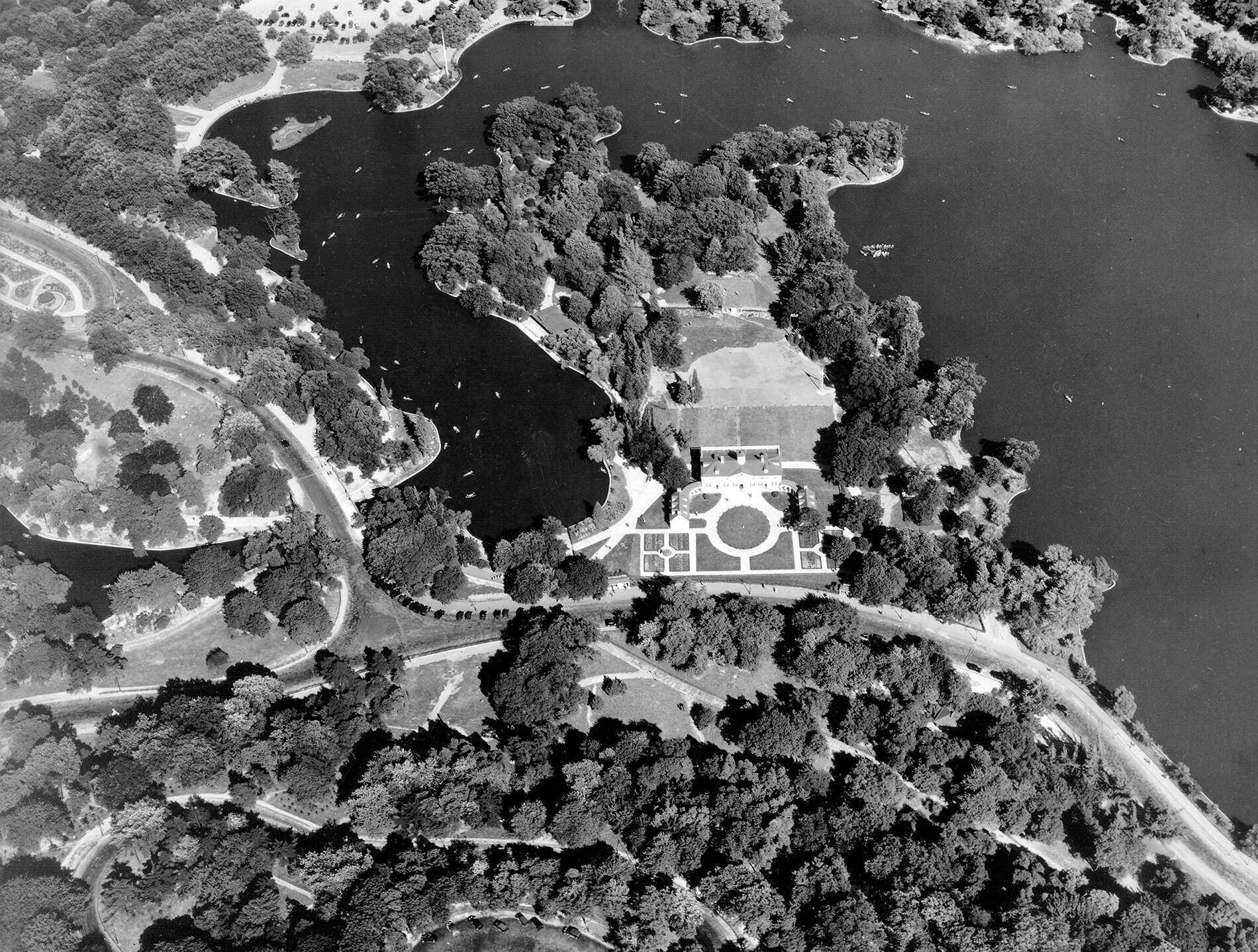
While it might be tempting to think of it as a peculiarly Brooklyn oddity, it was actually one of a handful of Mount Vernon replicas that starting popping up in the early 20th century. Both home and abroad, the style of Washington’s residence came to symbolize American values and history at fair pavilions from San Francisco to Paris.
Mount Vernon mania really ramped up with the 1932 bicentennial of George Washington’s birth and celebratory events across the country. The United States George Washington Bicentennial Commission was established in 1924 to make sure the centennial was an event to remember.
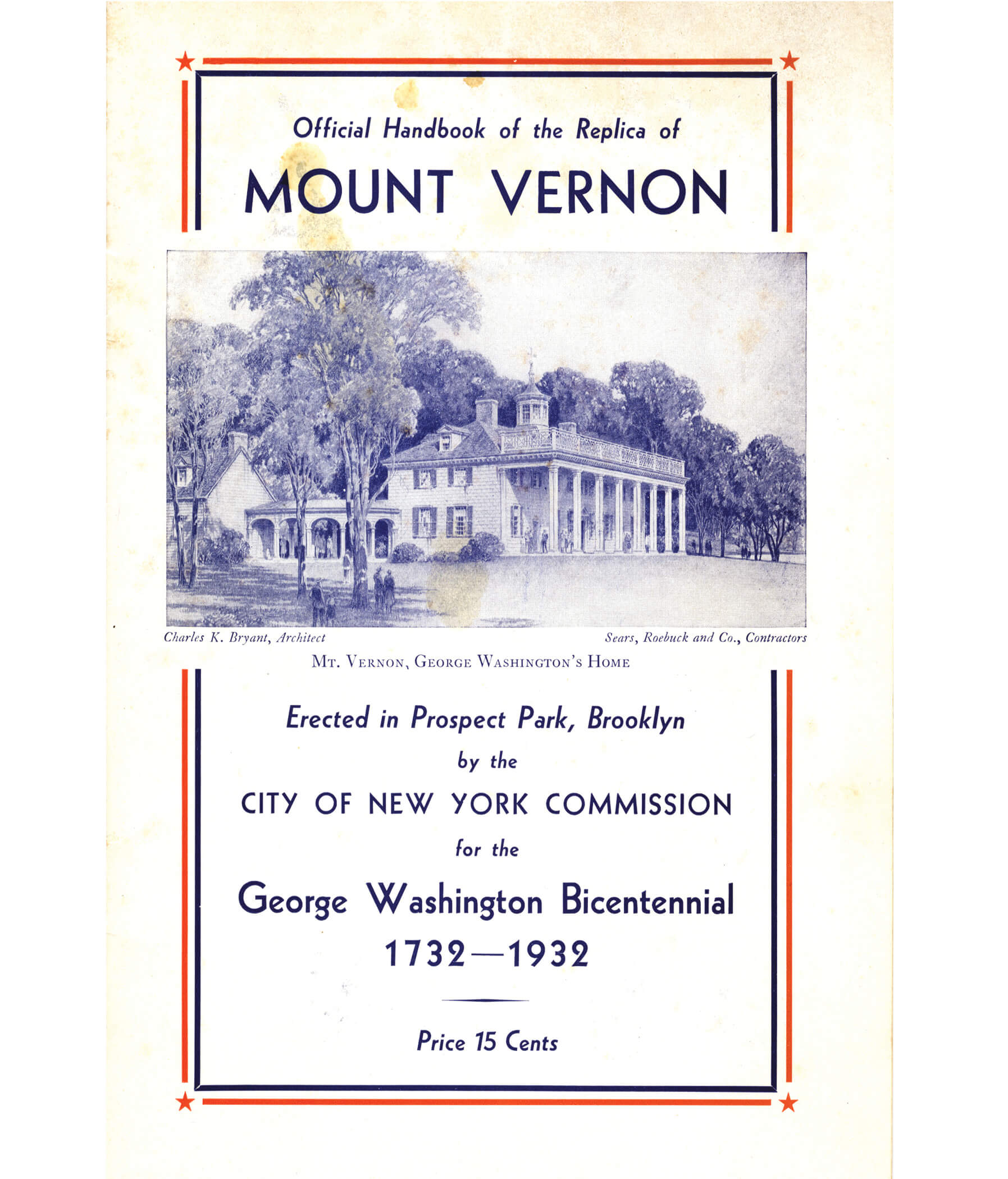
Prospect Park Archives/Bob Levine Collection
Ultimately, there were nine months of events in 1932 and, according to the commission’s final report, almost 5 million programs were held. The programs ranged in size and had a mix of historic and celebratory events, including reenactments, parades, museum exhibitions and concerts — a major undertaking in the midst of the Depression.
In New York, the City of New York Commission for the George Washington Bicentennial was established to map out plans for city-wide celebrations. Their ambitious plans called for the construction of two buildings to represent Washington.
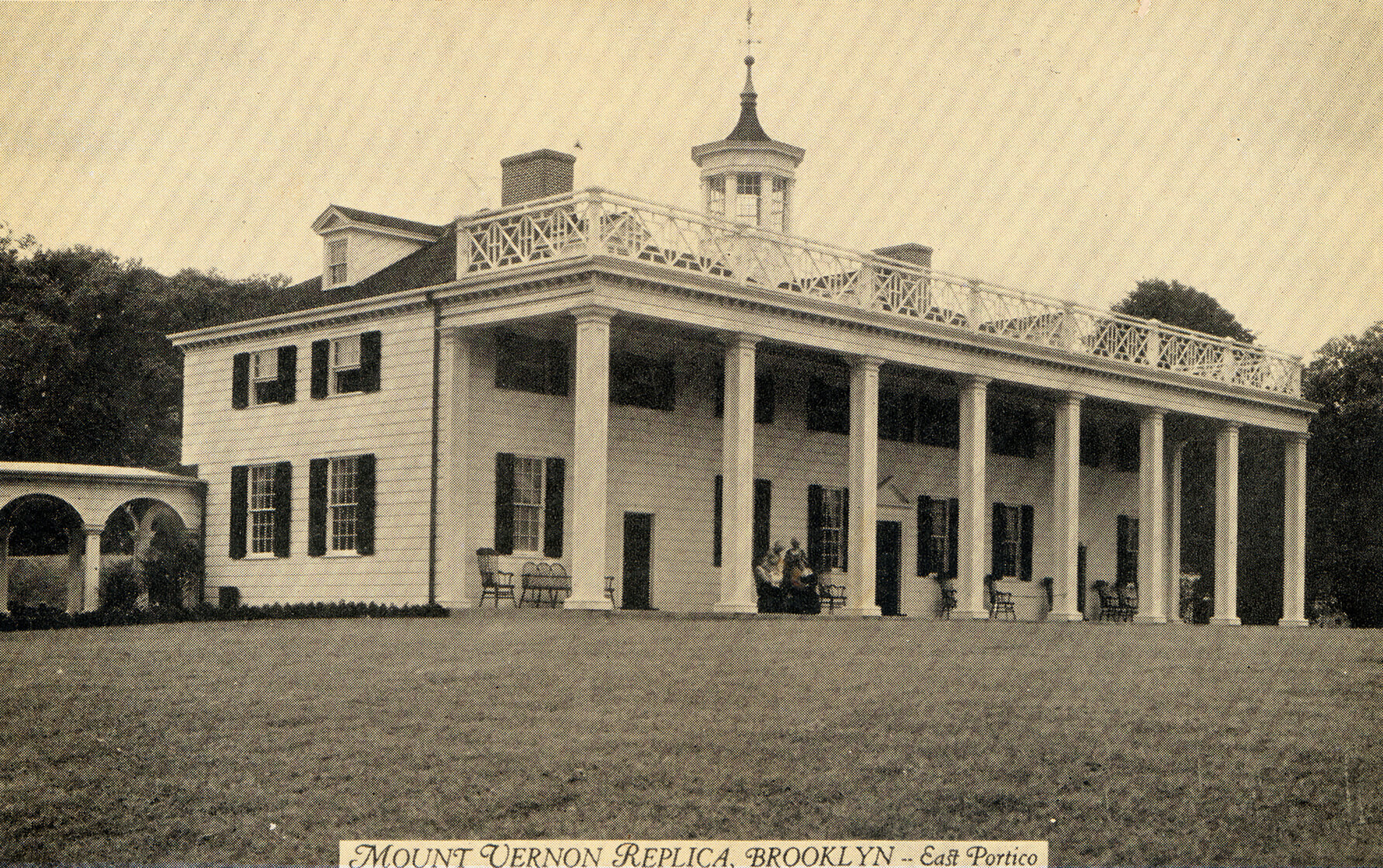
Manhattan’s Bryant Park was chosen as the location for a replica of Federal Hall, where Washington took his oath of office in 1789. The Wall Street building was demolished in 1821 and replaced by the current Federal Hall in the 1840s.
The second replica, Mount Vernon, was to be placed in Prospect Park. Architect Charles K. Bryant was recruited for the job and was already considered a bit of an expert in Mount Vernon imitation — he had designed a replica in San Francisco for the 1915 Pan American Exhibition and had recently completed one in Paris for the 1931 Colonial Exhibition.
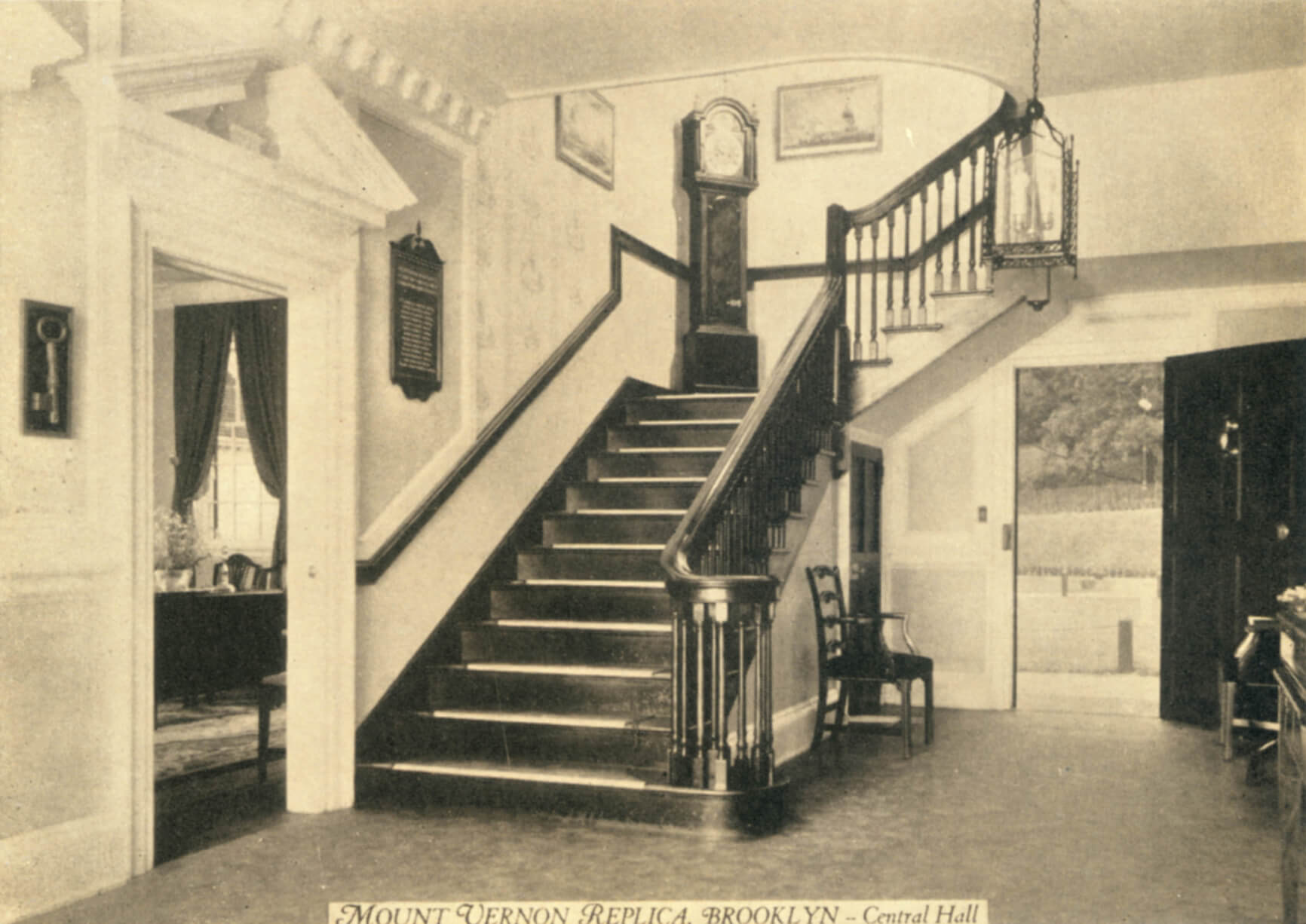
Bryant worked with Sears, Roebuck and Company to construct the Park Slope house, the same as he did for the Paris replica. It was a handy promotion for the Sears Modern Homes program — from 1908 to 1940 the company offered kit homes for sale. Buyers could pick out a design and the necessary pieces would arrive via train along with an instruction booklet for assembly. Roughly 75,000 houses were sold by the company, including one shipped to Canarsie.
The collaboration for the Paris version of Mount Vernon had gone so well that Bryant’s letter extolling his “great pleasure to have had Sears, Roebuck’s assistance” on the project was included in the company’s 1932 Homes of Today catalogue.
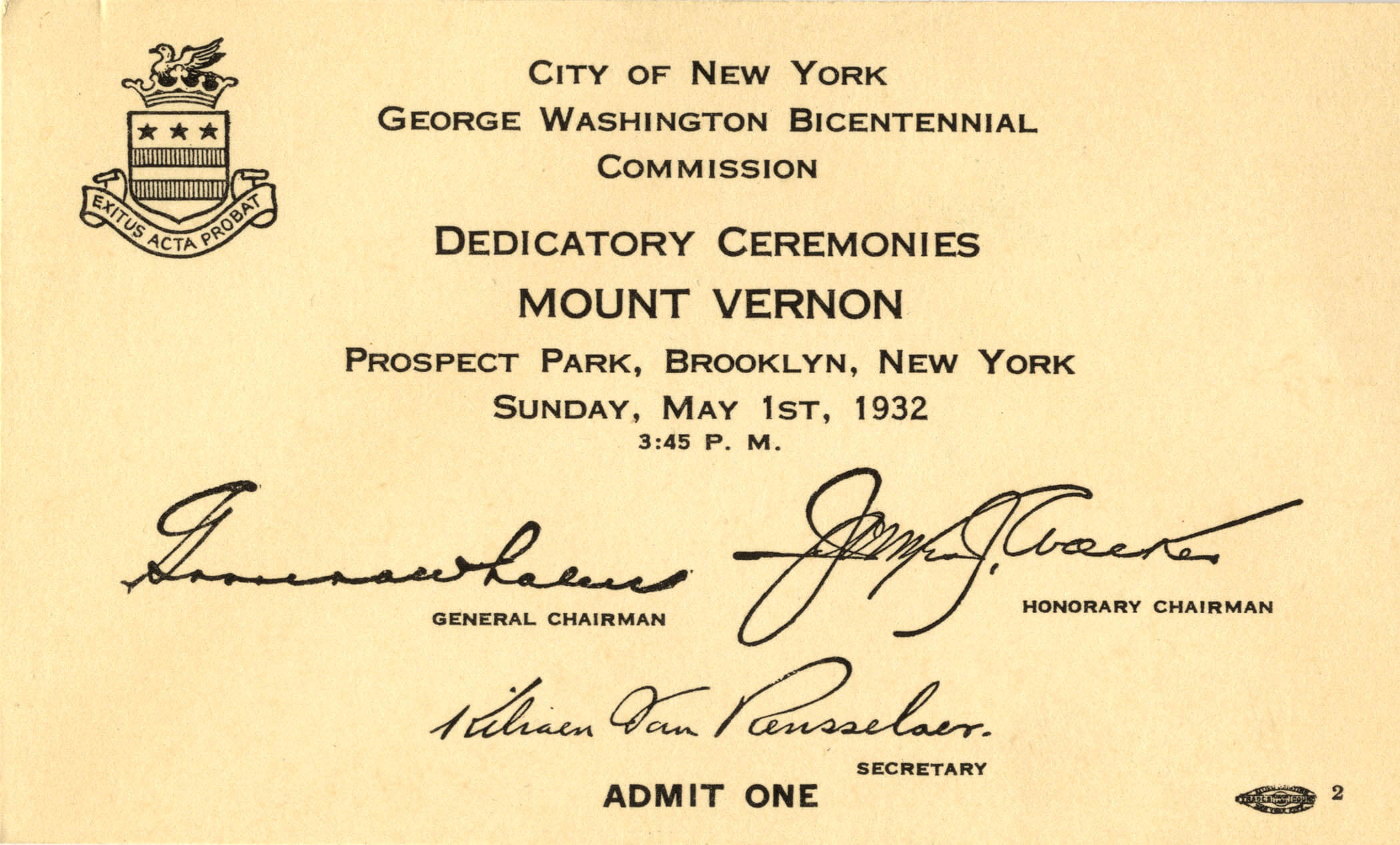
Construction on the house was finished in time for all the pomp and ceremony of the grand opening in May of 1932. The day kicked off with a military parade up Flatbush Avenue toward Grand Army Plaza and into the park until it reached the house.
Mayor Walker officially accepted the house as a gift to the city from the committee in front of an audience of thousands as well as George and Martha Washington impersonators. There were speeches, songs and prayer according to a report on the event in the Brooklyn Daily Eagle.
The reality of the “father” of our country also being a slaveholder and the economy of the farm depending on the work of enslaved people was referenced at least obliquely during the program — the Eagle article mentions that George and Martha were attended by two “Negro servants” and the entertainment included a performance of spirituals by the Elkins Jubal Choir.
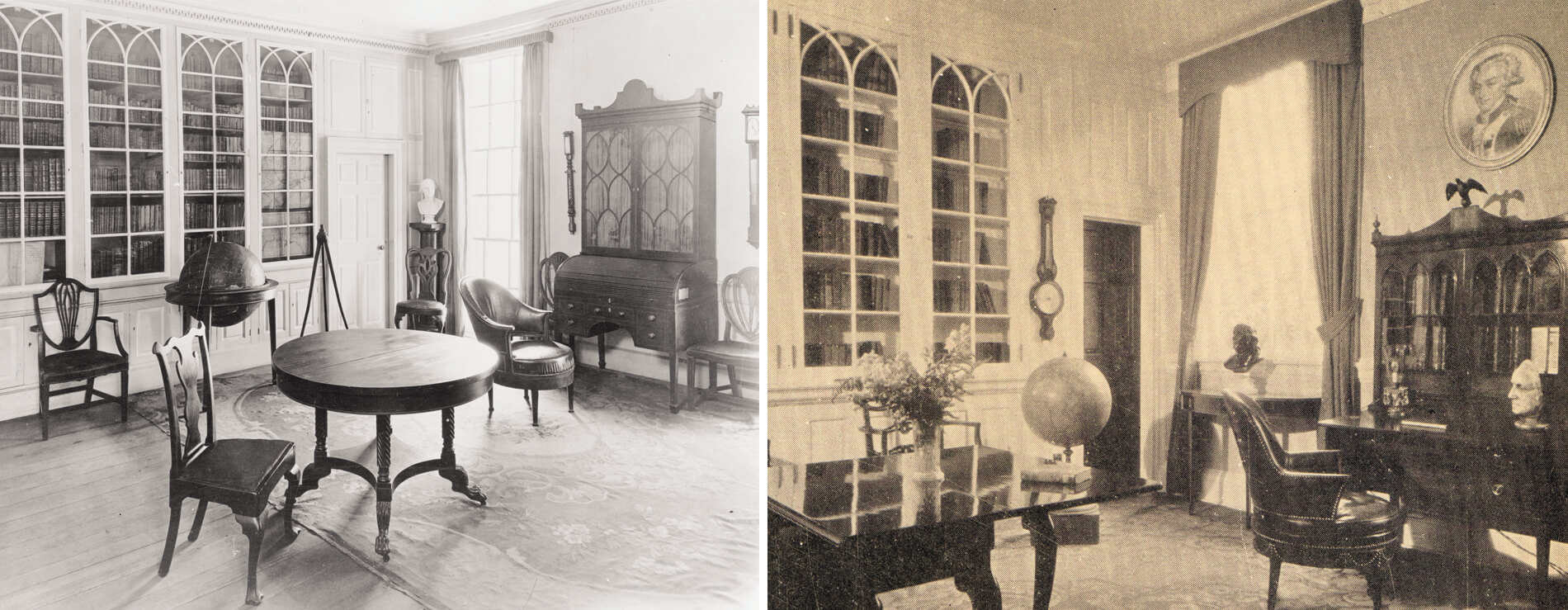
After the presentation concluded, George and Martha welcomed visitors into the house. No stage set, the house was a fully furnished replica that visitors could stroll through and learn more about the life of Washington. Furniture makers from Grand Rapids, Michigan supplied many of the case goods — beds, chairs, tables — while individual collectors, organizations and museums lent objects to give the house that true touch of Washington.
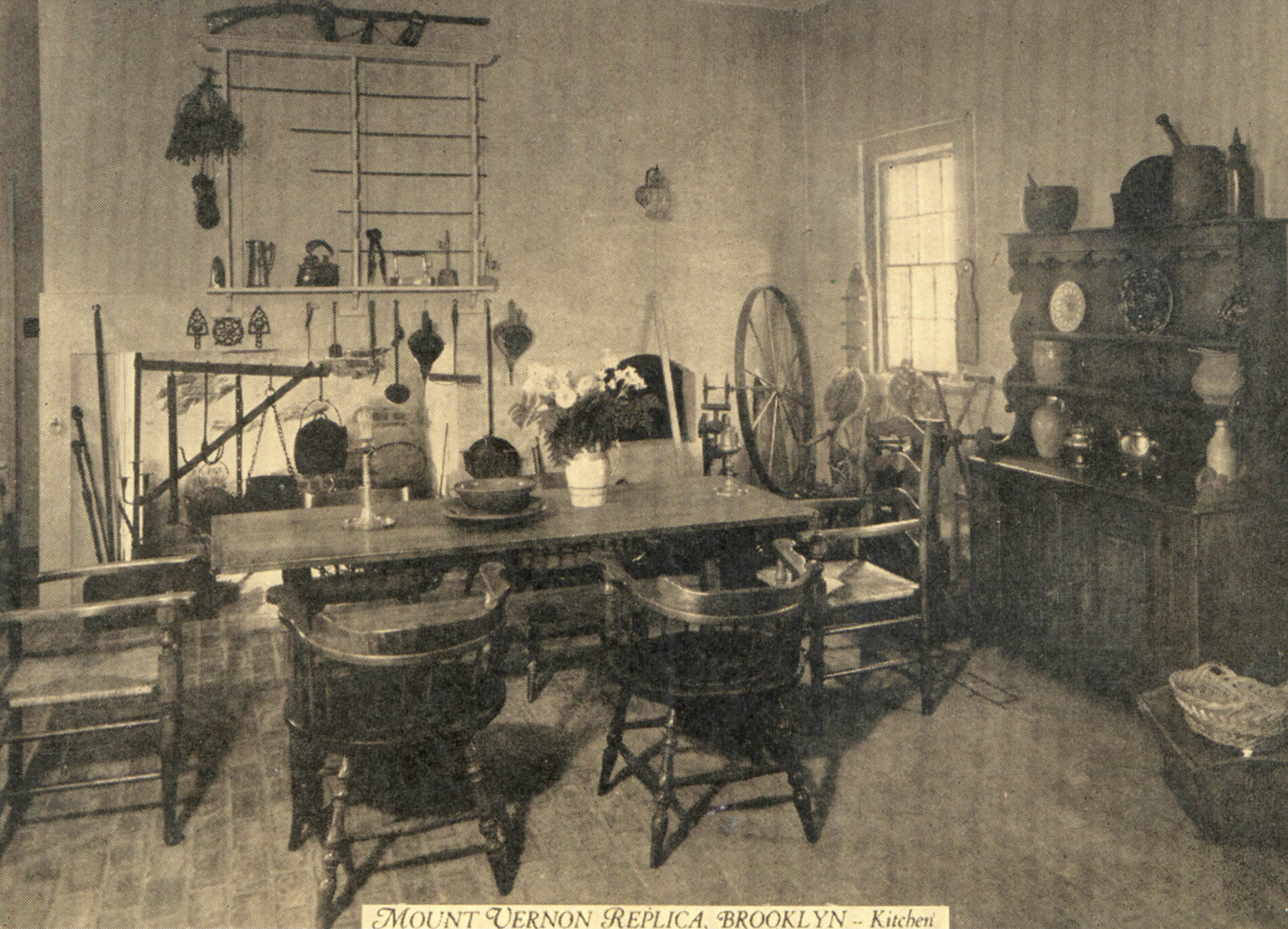
According to an exhibition guidebook to the house, the Brooklyn Museum lent several items, including a thermometer, lantern, compass and globe. The Fort Greene Chapter of the Daughters of the American Revolution, then located in the Lefferts House in the park, also provided a number of objects, including kitchen utensils and andirons.
Collectors of Washington memorabilia lent books, papers portraits and even the dressing gown supposedly worn by Washington with “bloodstains from the blood-letting he caused to be made on the day of his death,” according to the guidebook.
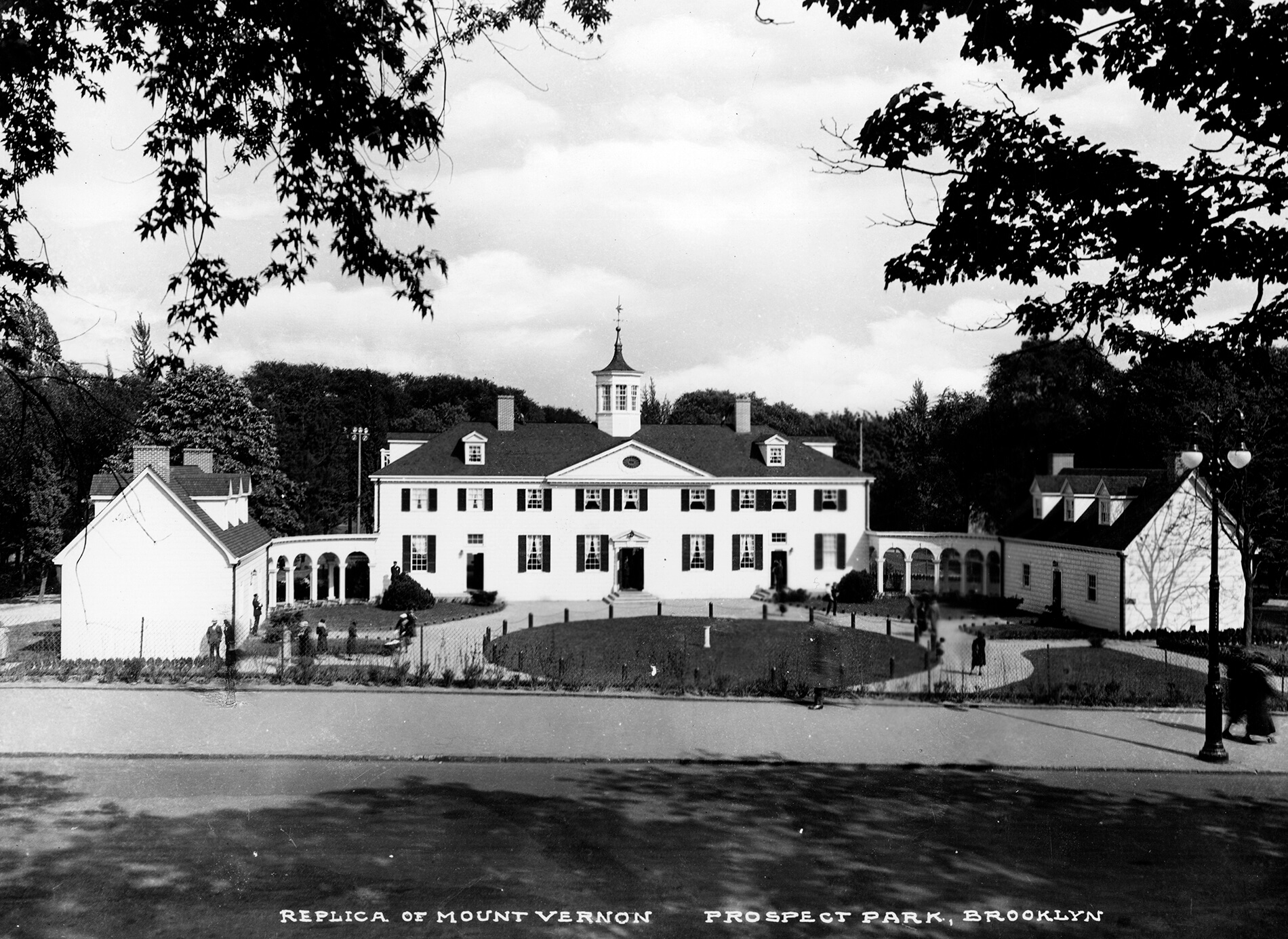
To create a fully immersive effect, the gardens of Mount Vernon were also replicated — at least to the extent the location in the park permitted. Return visits were encouraged with a heavy schedule of temporary exhibits on site from May through late November of 1932.
With the wrap-up of the centennial celebrations in November, the house was closed to the public with plans to re-open it in the spring of 1933. Whether the house would stay after its building permit expired in December of 1933, remained a question.
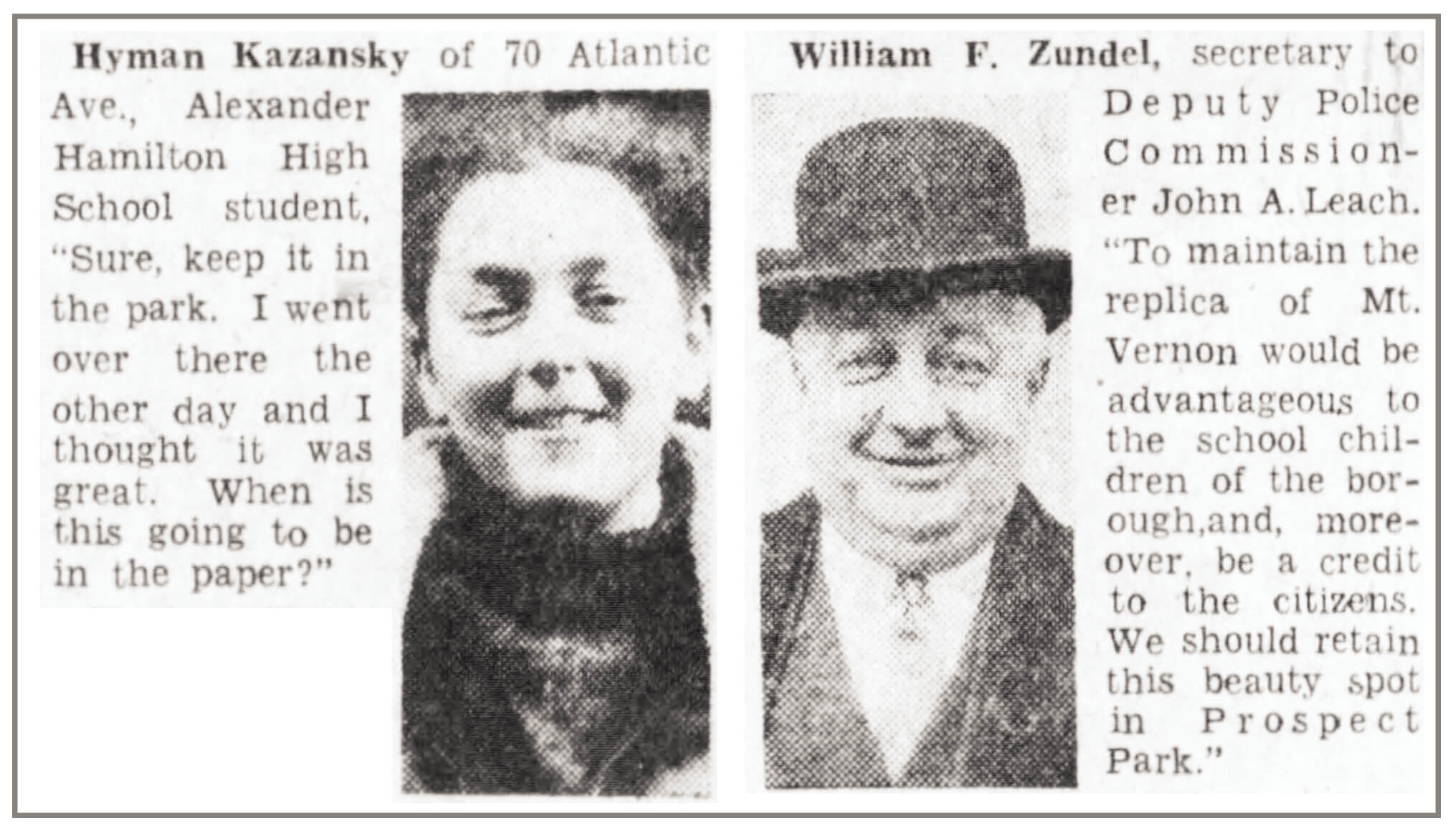
The Brooklyn Daily Eagle ran a poll to ask Brooklynites what they wanted. While some felt that the building ruined a scenic vista in the park, others, like telephone operator Rose Allegretti responded “Yes, let’s leave it there, it makes the park look better — more interesting.”
While the public responses were apparently in favor of the building it seems money shortages kept it closed. The construction had cost $150,000 and, according to both the New York Times and the Brooklyn Daily Eagle, there were still outstanding bills to pay.

By the summer of 1933, both papers were reporting the sad condition of the house, with the New York Times describing it has having “a forlorn appearance” with boarded up windows and the once white walls discolored. Even the garden was abandoned and taken over by weeds with the few hardy plants in bloom adding “to the desolate appearance of the scene.”
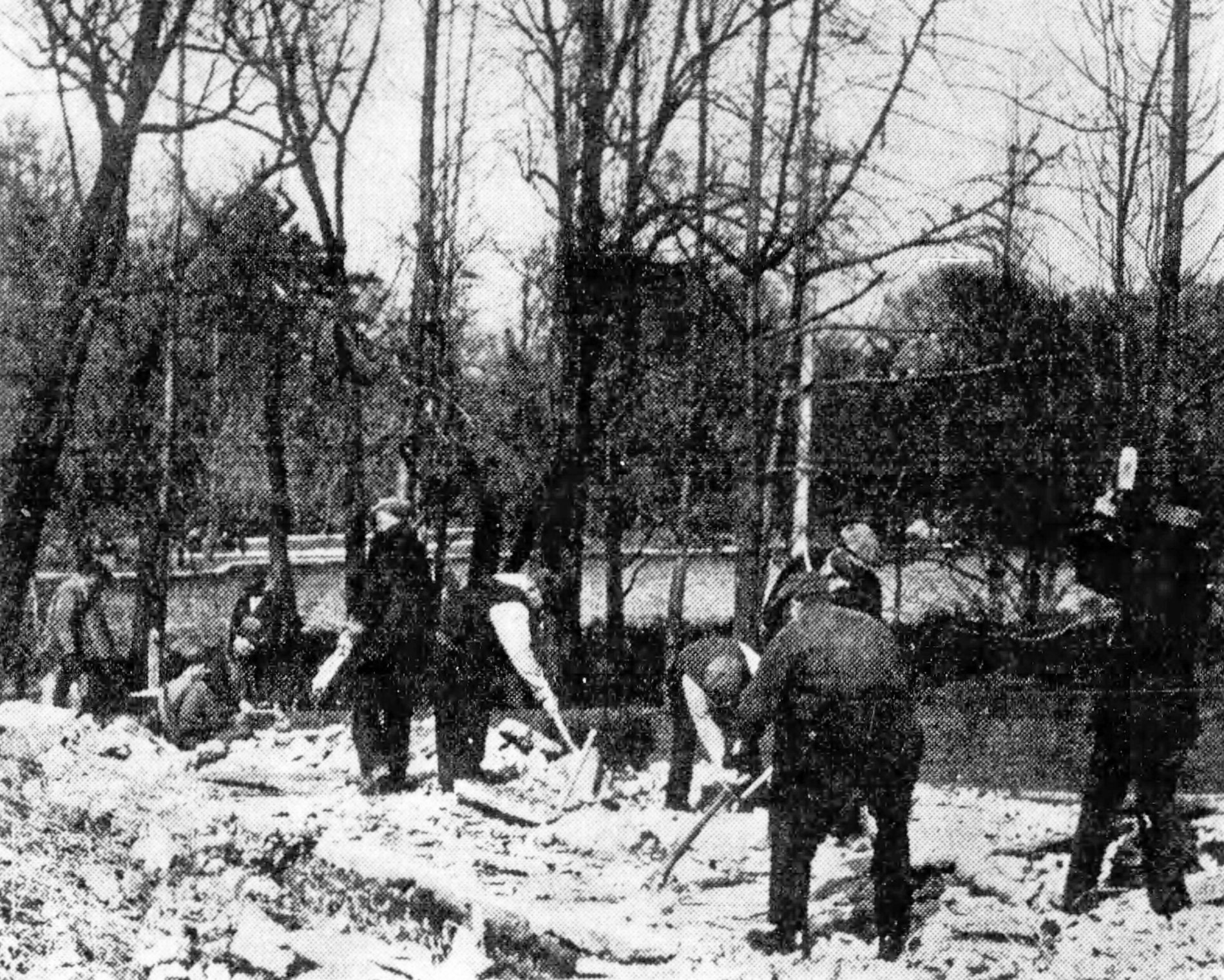
The dismantling of Washington’s house in the park finally began in February 1934 and by the end of March 1934 workers were hauling away the last of the rubble.
While Brooklyn’s Mount Vernon is no more, architect Charles K. Bryant’s Paris version survived. After the Colonial Exposition it was sold to an American who moved the house to a suburb of the city and set it up as his home. It remains a single family home today.
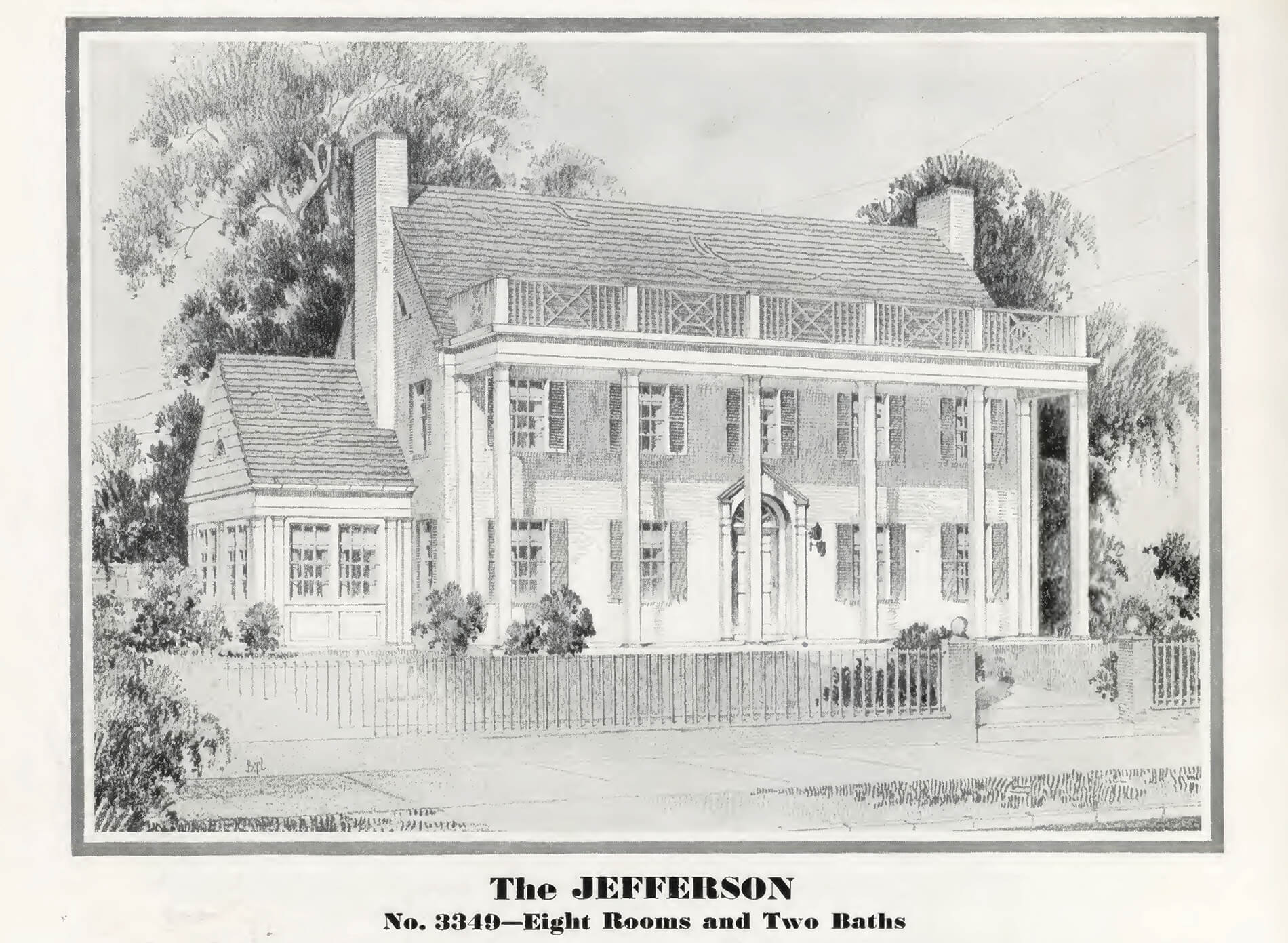
What if being able to tour a Mount Vernon replica made you want one of your very own? Sears was there to help — their 1932 Homes of Today catalogue included a kit home “designed along the same lines as historic Mount Vernon” — it was oddly called the Jefferson.
Related Stories
- Brooklynites Sport in Prospect Park (Photos)
- Bridging Nature With New Technology: The Cleft Ridge Span of Prospect Park
- Prospect Park Transformed (Photos)
Email tips@brownstoner.com with further comments, questions or tips. Follow Brownstoner on Twitter and Instagram, and like us on Facebook.





What's Your Take? Leave a Comment